Sundarbans has got the world's largest coastal mangrove forest (an area of about 10,000 km2), with enormous beauty shared between India (4,000 km2) and Bangladesh (6,000 km2). Sundarbans was declared as a core area of Sundarbans Tiger Reserve in the year 1973, a National Park on 4th May, 1989 and recently Sundarbans has been enlisted among the finalists in the New Seven Wonders of Nature. The interconnected network of waterways in Sundarbans makes almost every corner of the forest accessible by ferries and boats. This gives the traveler a good opportunity for sightseeing and getting thrilled by the exotic wizardry of the jungle.
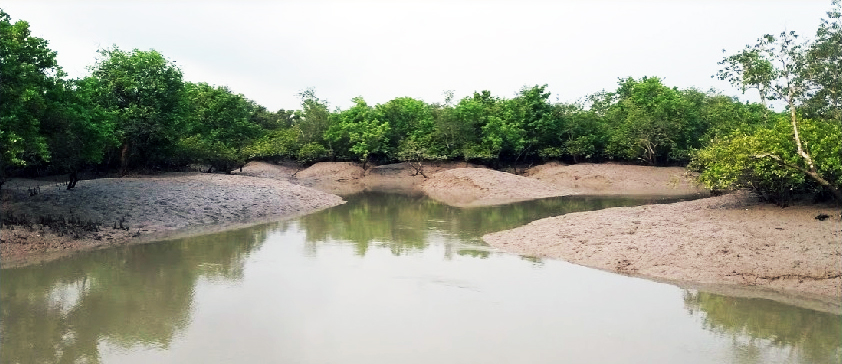
The Indian part of the forest is estimated to be about 40 percent, while the Bangladeshi part is 60 percent. To the south the forest meets the Bay of Bengal; to the east it is bordered by the Baleswar River and to the north there is a sharp interface with intensively cultivated land. The natural drainage in the upstream areas, other than the main river channels, is everywhere impeded by extensive embankments polders. Rivers in the Sundarbans are meeting places of salt water and freshwater. Thus, it is a region of transition between the freshwater of the rivers originating from the Ganges and the saline water of the Bay of Bengal It is believed that most of the families have been attacked by the man-eater tigers in one of the villages (the Widow Village) of Sundarbans, which is a home to India's resilient Tiger Widows. For this reason, fishermen need to take a special permission from the reserve forest office department for fishing into the core zone forests. This isn't to scare you; you can freely go to Sundarbans without any worry.
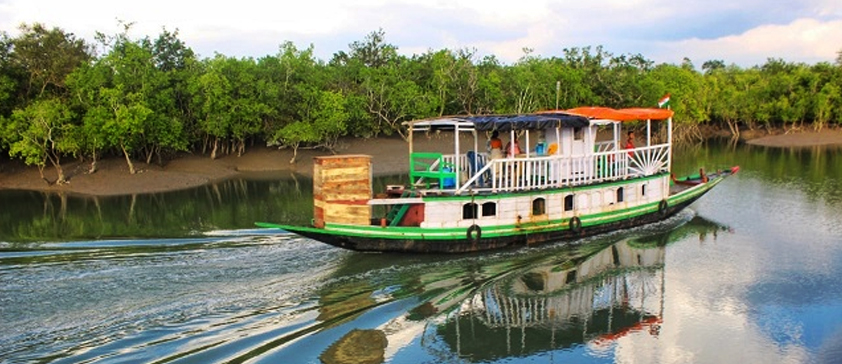
Several novels have been written by authors in the setting of Sundarbans that are based on the rigors of the lives of villages and fishermen which include The Mystery of the Black Jungle by Emilio Salgari, Sundarban Jungle has been named after the large mangrove trees Sundari (Heritiera littoralis). You shouldn't miss out on sighting Phytoplanktons – the small micro-organisms that reflect light in the dark new moon, for that you need to take night safari in Sundarbans (although timing for entering forest is from Sunrise to Sunset but you may go and take a short round beside Sajnekhali range between 8 to 9 PM as a dinner cruise). Some famous trees of Sundarban Mangrove forest - Dhundal tree, Mangrove cannon-ball (Xylocarpus Granatum) A small to medium size tree that grows in marshes of estuaries and creeks. The large fruits resemble cannon-balls. The tree is monoecious or rarely dioecious. Native to India, in Sundarban. Pasur tree – (Xylocarpus Mekongensis) of Sundarban. also see Golpata Tree (Nypa fruticans) Garan Tree -(Ceriops decandra) and Kankra Tree(Bruguiera gymnor hiza)
Gosaba is above 13 ft of sea level - is the biggest and last inhabited Island on Sundarbans (Indian part). You would find it right where the dense forest reserve starts. Even though the island is isolated from the mainland, it has its own panchayat, schools, hospitals, local self-governance and more.
The Sundarbans Tiger Reserve, created in 1973, was the part of the then 24-Pargans Division. Subsequently the area comprising of the present tiger reserve was constituted as Reserve Forest in 1978. The total area of the Sunderbans is 9630 sq. km. out of which 4264 sq. km. bears mangrove forest. The area of the Reserve is 2585 sq. km. covering land area of 1600 sq. km. and water body over 985 sq. km. Within this area 1330.12 sq. km. is designated as core area, which was subsequently declared as Sundarban National Park in 1984. An area of 124.40 sq. km. within the core area is preserved as primitive zone to act as gene pool. Within the buffer zone, Sajnekhali Wildlife sanctuary was created in 1976 covering an area of 362.335 sq. km. considering the importance of the biogeography region of Bengaline River Forests and its unique biodiversity the National Park area of the Reserve was included in the list of World Heritage Sites in 1985. Whole Sundarbans area was declared as Biosphere Reserve in 1989.
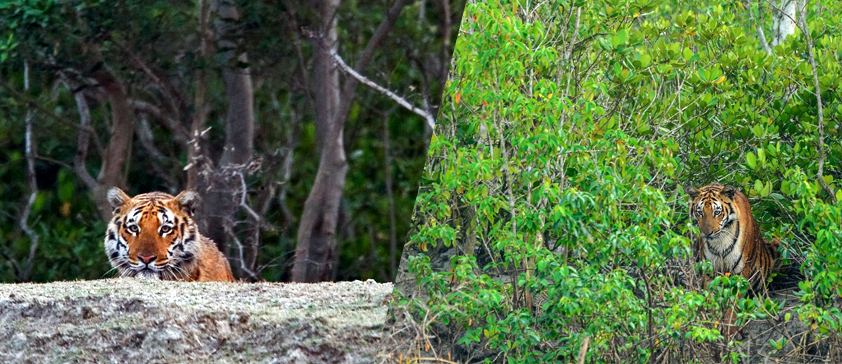
We are engaged in offering Sundarban National Park Tour Package- offering tours of Sundarbans, Sundarbans Mangrove forest tour , Sundarban Forests Adventure tours in tourist are and buffer area as per choice of tourist with valid permission from Forest department of Govt. of West Bengal. and Sundarbans Bird watching tour.
We organise 1n / 2 days , 2 nights/ 3 days , 3 night / 4 days & 4night/5 days tour as per clients choice able date.
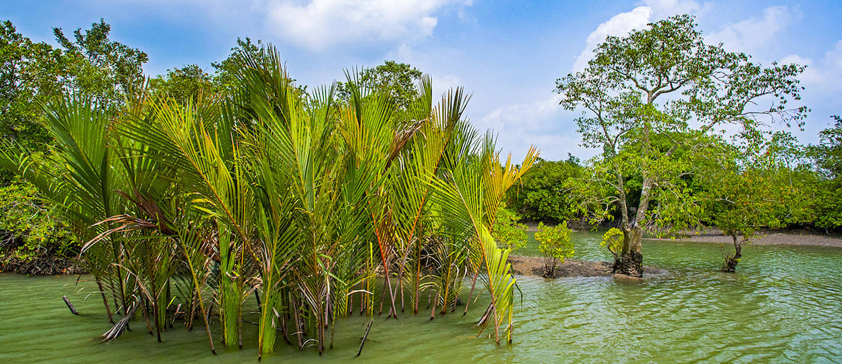
Explore the virgin forests of Sunderbans blessed by nature with a rare beauty. For miles and miles, the lofty treetops form an unbroken canopy,while nearer the ground, works of high and ebb-tide marked on the soil and tree trunks and the many varieties of the natural mangrove forest have much to offer to an inquisitive visitor. No wonder, you may come across a Royal Bengal Tiger swimming across the streams or the crocodiles basking on the river banks.
Since the Sundarban reserve forest is amalgam of small islands spread over in 2585 Sq km. out of which 1330 sq Km is Core area and rest 1255 sq Km is Buffer area . In 1976 , 362.34 sq Km identified as a Sajnekhali Reserve forest.
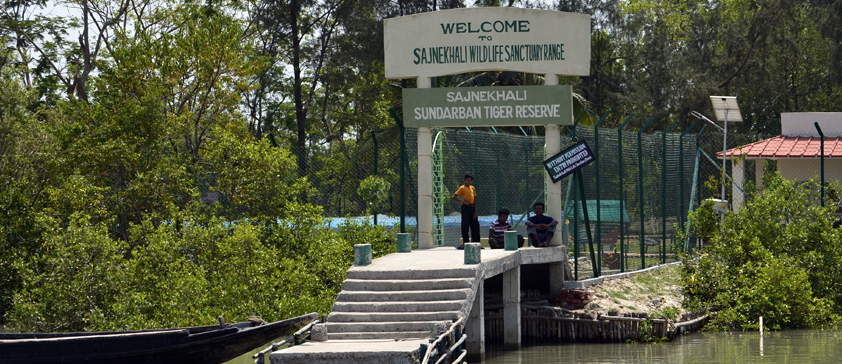
Sajnekhali Watch tower - it's only 2 hrs cruise from Godhkhali Jetty Via Bidya , Gomor & Durgaduwani, which is also having a Forest office from where the West Bengal forest department control the movement of all commercial boat and launches apart from there regular routine work. Tourist places within Sajnekhali Reserve forest are Pakhiralay, Sajnekhali, Sudhanyakhali watch tower, Pirkhali, Panchamukhi and Dobanki watch tower along with adventures Island cruise inside the narrow creeks by boat.
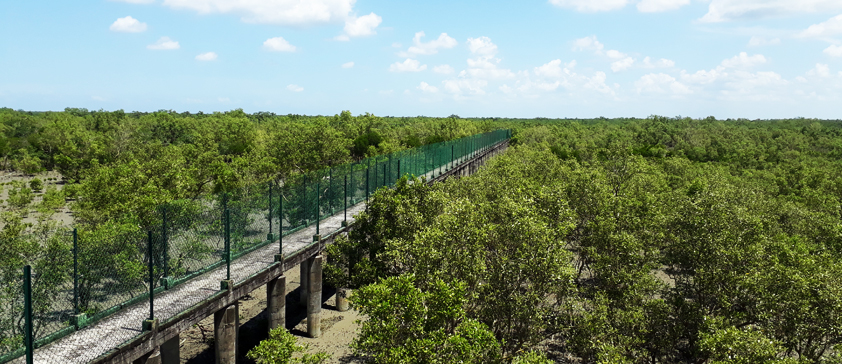
Tourist places in Buffer area - Netidhopani & Buri Dabri, Jhinga khali and Bagna Forest. Sunderban spreads over 54 islands and two countries (India's West Bengal and Bangladesh) and is part of the world's largest delta region. The core area is 1330 sq. kms and is a national forest and UNESCO world heritage site. Sundarban is famus for Royal Bengal Tiger. It is the largest Mangrov forest in world.
Around 5000 local fisher men are dependent on this salty water of Sundarban. They can catch fish only in buffered area and with the permission of the authority. Similarly honey hunting is allowed in the buffer zone only during the months of April and May.
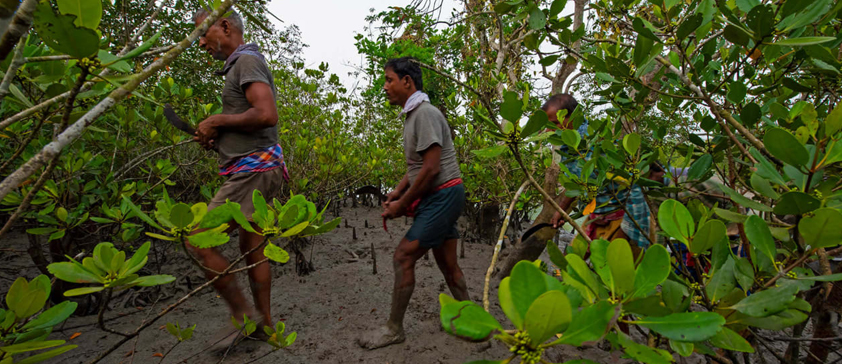
Administrative boundary of the Sundarban is spread over two districts i.e. North 24-Parganas and South 24-Parganas, covering 19 blocks as under:
The extent of mangrove Reserve Forests in Indian Sundarban is around 4260 sq km, out of which 55% is under land vegetation cover and balance 45% is under water body/ inter-tidal zone. Nearly 40% of the Reserve Forest area has been brought under Protected Area (PA) network, as follows:

FLORA & FAUNA OF SUNDARBAN - Sundarbans mostly comprises of mangrove forests. Mangroves re salt talarent plants.Sundarbans are the largest mangroves reserve in the world. There are more than 80 species of mangrove in sundarbans including the mangrove associates & mangrove species. Sundarban has rich faunal diversity.sundarban is rich in wildlife.it is mainly because of forests of sundarban is protected by the government.
The sundarban has provide ideal habitat to a number of species. Some of important animals of sundarbans are listed below: